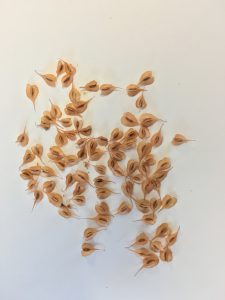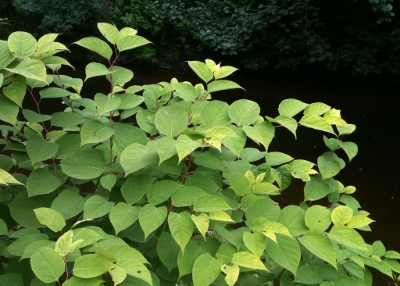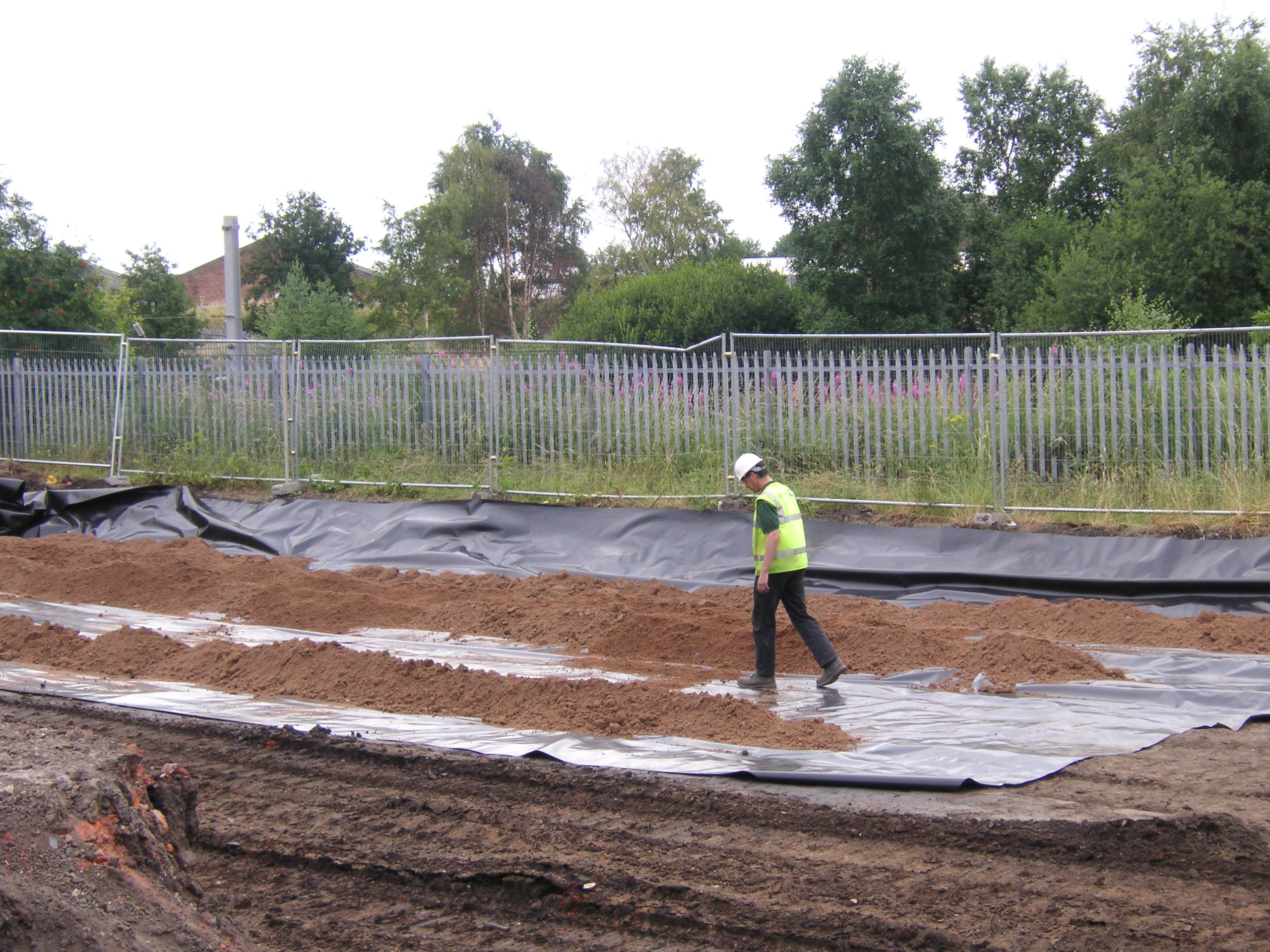How Japanese knotweed Spreads
19-07-2017
Last updated 07-06-2023

Japanese knotweed seeds
As the general public’s knowledge of Japanese knotweed (Fallopia japonica) and the issues it causes continue to rise, we find that there is one persistent and resolute piece of misinformation or miscomprehension that persists.
That is, how Japanese knotweed actually spreads.
How does Japanese knotweed spread?
Japanese knotweed mainly spreads vegetatively, from fragments of its rhizome/roots being moved from one location to another. This often happens when soils close to knotweed plants are dug and moved elsewhere. Although it often produces seeds, these almost never develop into plants.
Japanese knotweed is a vigorous, hardy, perennial plant (a plant that lives for more than two years consecutively) with shield-shaped leaves (young leaves are sometimes heart-shaped), purple-spotted bamboo-like stems and small, creamy white flowers, which appear very late in the summer.
It is not native to the British Isles and as such it is not exposed to any of the controlling organisms that maintain it to its natural extent in its countries of origin (i.e. Japan, Korea and parts of China).
Follow these links for guidance on Japanese knotweed identification and plants that look like Japanese knotweed.
With the absence of controlling organisms (such as bacteria, fungi and invertebrates) and climate, the plant has been able to spread unchecked across Britain. Often, this has been at the expense of native species in biologically diverse and sensitive habitats.
Knotweed is a dioecious plant, in other words there are separate male and female plants. Only the female plant has been recorded to date in the UK, therefore even where Japanese knotweed seeds are produced, they have not been fertilised by the same species, and are sterile and unable to produce new plants. However, hybridisation, the process whereby a plant is able to breed with an individual of another species, is possible with Japanese knotweed.
In the UK two species closely related to Japanese knotweed are giant knotweed (Fallopia sachalinensis), a much taller plant which can reach a height of 5m; and a smaller compact variety (Fallopia japonica var. compacta), which grows to a height of only 1m. The hybrid (Fallopia x bohemica) is a cross between Japanese knotweed and giant knotweed, and is found throughout the UK, but is not as common as Japanese knotweed.
Hybridisation is rare, requiring both species in the same area for cross-pollination to occur, and when produced these hybrid seeds rarely survive due to a lack of hardiness – therefore we can say that wind dispersal of Japanese knotweed seed is quite rare.
So if wind dispersal is not the culprit, how does Japanese knotweed spread?
Japanese knotweed exhibits vigorous growth through the soil from a fibrous rhizome (creeping root system, much like underground stems). Soil can be contaminated with reproductive knotweed material up to a depth of 3m and a radius of over 7m (or wider in certain instances) from the main clump of stems. The rate of growth is very rapid.
Consequently, Japanese knotweed can quickly colonise large areas of land if not controlled. Japanese knotweed spreads by disturbance and spreading of the root system that stimulates re-growth. It is often quoted that a fragment weighing just 0.7g can produce a new plant. Therefore the main culprit in the spread of Japanese knotweed is the inadvertent transportation of soils containing rhizome fragments.
It is therefore vital that if you suspect you have Japanese knotweed you should get specialist advice as soon as possible.
How easily does Japanese knotweed spread?
Japanese knotweed spreads very easily from small fragments of its underground shoots (rhizomes) being moved to new locations. This can easily happen as the rhizomes can spread several metres underground from the above ground stems, which means disturbance of the ground in a relatively wide radius can result in rhizome fragments being produced.
Any movement of soils containing these fragments can result in new plants emerging in new locations. Although Japanese knotweed often produces seed (usually resulting in hybrids) it almost never develops into new plants, at least not in the UK.
Does Japanese knotweed always spread?
By its very nature, Japanese knotweed is an invasive weed that can spread incredibly quickly. However, it will spreads less quickly if is constrained by poor growing conditions, such as limited soil or competition with other dense vegetation.
How fast does Japanese knotweed spread?
The rate of spread of Japanese knotweed depends on the conditions in which it is allowed to grow. In perfect soil and light conditions, rhizomes can spread more than a metre each growing season.
How far can Japanese knotweed spread?
The underground shoots (rhizomes) of Japanese knotweed can spread very far, well beyond seven metres in some cases. However, they most usually don’t spread further than three metres.
Japanese knotweed can also spread when fragments of rhizome are washed downstream in flowing watercourses or are accidentally translocated across a site during construction or landscaping works.
How did Japanese knotweed spread around the UK?
Japanese knotweed has mainly spread in the UK from pieces of rhizome contaminating soil that is then moved elsewhere. This movement of contaminated soils could be as part of waste disposal, ground works for new buildings, or from intentional disposal of unwanted wastes by fly-tipping them.
Can Japanese knotweed spread in winter?
Japanese knotweed stops growing in winter. However, if the ground is disturbed and fragments of rhizome are accidentally moved to new locations then new knotweed growth could be spread to new areas, which will start to grow in the following spring.
How do you stop Japanese knotweed from spreading?
The only way to stop Japanese knotweed from spreading is to either dig it out of the ground and responsibly get rid of it at an appropriate waste facility such as a landfill site, or to control it with effective applications of an appropriate herbicide (which will typically require a professional contractor).
Can Japanese knotweed just appear?
Japanese knotweed can certainly seem to appear from nowhere. Particularly if there are dormant rhizomes remaining in the ground from past treatment. If these are disturbed by landscaping or other types of groundworks they can quite easily break their dormancy and produce new shoots.
Does Japanese knotweed spread by seed?
In the UK, knotweed almost never spreads by seed. This is because only female plants were originally introduced in the 1800s, so there is no knotweed pollen. However, some plants can produce hybrid seed from closely related Russian vine pollen. Thankfully, this does not result in viable seedlings.
Can I spread Japanese knotweed by touching it?
You cannot spread Japanese knotweed simply by touching it. In order to spread it you would need to break off a piece of rhizome/root and place it in the ground somewhere. Fragments of stem can also cause new growth, but this is less likely than from rhizome fragments.
Can animals spread Japanese knotweed?
If animals cause pieces of knotweed rhizome/root be snapped off and moved elsewhere then this can cause knotweed to spread. Burrowing, digging or other types of soil disturbance from animal movements can spread knotweed this way.
Does cutting Japanese knotweed make it spread?
If you are not careful when you cut down knotweed you can cause it to spread. Rhizome fragments are easily broken off in the ground and they can also remain attached to stems when they are pulled up. If you drop bits of rhizome ,crown or stems then this can also cause new growth to spread.
Why is this important to me?
The mere presence of Japanese knotweed in or even near domestic gardens is making it problematic to get a mortgage, and therefore buy and sell property. Under various legal instruments, if the infestation is left unmanaged and untreated, the problem could lead to potential legal action as it has been identified as an antisocial annoyance or nuisance and could cause blight to property and/or a neighbourhood.
The popular press has picked up on a landmark legal ruling in which Phlorum recently provided expert witness services. It revolved around two claimants in South Wales who were suing Network Rail for knotweed encroaching onto their properties.
The judgement ruled against Network Rail, who were required to pay damages for the impact their knotweed had on the value of the claimants’ properties. The result will particularly resonate with anyone who owns land that could be affected by knotweed.
It is now much more likely that the mere presence of knotweed close to, and not necessarily on, a property will result in a successful claim for damages. Going forward, homeowners and building developers will need to be aware of exactly how Japanese knotweed might spread and affect theirs and their neighbours’ properties.
Phlorum is one of the UK’s leading specialists in commercial and domestic Japanese knotweed removal with offices across the UK, including Brighton, Manchester and Cardiff.
We offer our services, including Japanese knotweed surveys, to both domestic and commercial clients from anywhere in the UK and Ireland.



